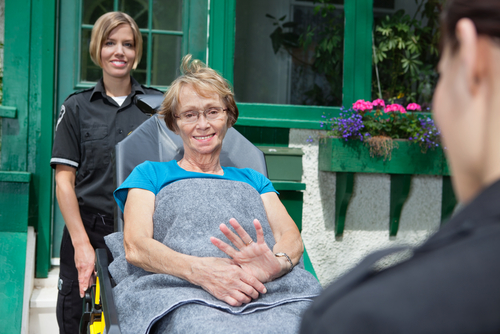- Do You Tip Medical Transport Drivers License Test
- Do You Tip Medical Transport Drivers Handbook
- Do You Tip Medical Transport Drivers License
If you need to transport multiple patients, we can provide you with our new Med Sprinter Ambulance that can transport 1-3 patients at a time. Whether you or a loved one needs to travel to a medical appointment, your home, or another hospital in another state, we can help get you there. When you use our service, you are guaranteed the lowest rates on thousands of medical transport vehicles, medical vans and ambilances. For more details on how our service works, see How It Works page. Otherwise, if you are ready to save money on medical transport service in your city, click Get Medical Transport Quotes button to start. When you use our service, you are guaranteed the lowest rates on thousands of medical transport vehicles, medical vans and ambilances. For more details on how our service works, see How It Works page. Otherwise, if you are ready to save money on medical transport service in your city, click Get Medical Transport Quotes button to start.
This article is intended to provide a brief overview of the primary options for Non-Emergency Medical Transportation and the quality of service that patients consider most important to enhance their overall healthcare.
Ambulance Transportation:
Ambulance transportation is usually reserved for emergency medical situations. However, ambulance transportation can be used in non-emergency medical situations where the patient’s health is a concern, and the transport is deemed medically necessary to provide support for the patient. These transports are typically from hospital to hospital; hospital to home; hospital to nursing home; or hospital to outpatient services. The circumstances for the necessity of these transports vary widely, dependant upon the individual patient’s medical condition.
Effective, the Louisiana Office of Motor Vehicles implemented the Temporary Instructional Permit (TIP). All students must present a TIP to the enrolled driver education provider prior to the administration of the knowledge test, operation of a motor vehicle during on-road driving skills instruction or an on-road driving skills test. Veterans Transportation Program assist veterans who require travel assistance to and from VA health care facilities. VTP offers these services at little or no costs to eligible Veterans. Apply for and manage the VA benefits and services you’ve earned as a Veteran, Servicemember, or family member—like health care, disability, education,.
Due to the high cost of ambulance transportation, it must meet specific guidelines to be considered medically necessary, in order to be covered under Medicare, Medicaid, and most health insurance policies. Before using an ambulance service for non-emergency medical transportation, it is recommended you check with your insurance provider to see if you are covered for the service. Otherwise, you may be liable to pay the ambulance company hundreds of dollars out of your own pocket.
Non-Emergency Medical Transportation Companies:
Non-Emergency Medical Transportation (NEMT) companies were established to fill a unique void in medical care, by enabling patients who cannot drive or do not have access to transportation to get to their appointments. These companies provide a lower cost service than ambulance companies, and a safer, cleaner, more comfortable ride than private taxi services or public transportation. NEMT companies are also trained and equipped to accommodate special needs for physically disabled persons, including wheelchairs, walkers, and service animals. Our NEMT drivers are familiar with the locations and physical layouts of all the major medical facilities in our area, thus we are uniquely qualified to go the extra mile to assist passengers with door-through-door service, to and from the vehicle.
What is meant by door through door service? If a client was mobility challenged or anxious as to where to check-in for a first time appointment, our drivers can assist the client into the building, including holding doors open, assistance with elevator’s or stairs if requested.
A reputable, customer-focused NEMT company employs highly skilled drivers with these credentials:
- CPR Certified
- First Aid Certified
- Defensive Driver’s Training Course
- HIPAA Regulation Training
- Assisting Persons with Disabilities Training
- Emergency Situation, Procedures, and Bloodborne Pathogens Training
- Fraud, Waste, and Abuse Training
Most NEMT companies receive their work from large transportation brokerage firms that distribute the work to qualified NEMT providers. NEMT companies must adhere to high standards, certifications, inspections, and training set forth by these companies to be considered a preferred transportation provider. NEMT companies utilize sophisticated dispatching software and scheduling programs that allow them to provide reliable, on-time service.
With prior authorization, NEMT services can be covered under Medicare, Medicaid, and many health insurance programs.
Private Taxi Transportation:
Most patients whom require non-emergency medical transportation are in a certain state of distress, due to their particular medical condition. These patients deserve clean, safe, comfortable transportation from individuals who are professional, polite, compassionate, and possess the experience and understanding of their situation.
Most private taxi drivers have little or no training on how to treat or accommodate persons with medical conditions or physical disabilities. Their primary concern is to get the passenger to their destination as quickly as possible, in order to make money. It is rare to see a private taxi driver exit his vehicle, much less offer assistance through the front door to the facility check-in area. The result of this attitude is often an unpleasant, unreliable experience that can cause more stress on the patient. Furthermore, taxi drivers often subsist on “tips”, and seem to sense that seniors and persons with mobility issues understandably are less likely to afford a gratuity, and thus the service falls to levels below that given to the general population.
Under most circumstances, private taxi companies do not bill Medicare, Medicaid, or health insurance providers. Therefore, the patient must pay the transportation fee upon delivery and handle the reimbursement request themselves.
Do You Tip Medical Transport Drivers License Test
Public Transit:
Public transportation for persons with medical conditions, behavioral problems, or physical disabilities can be an inconvenient, inefficient, and stressful mode of transportation. The patient has to find a way to the bus terminal and wait for the bus to arrive, often in inclement weather. The patient is dropped off at the bus terminal closest to their destination, but rarely within safe walking distance. Seniors and persons with disabilities are especially susceptible to falls, and boarding a bus can be a daunting and hazardous task for them.
As with private taxi drivers, few public bus drivers have adequate training on how to properly accommodate the needs of persons in poor health or with disabilities. In fact, due to the fixed-route nature of public transportation, the patient’s final destination is unknown by the bus driver. They have no way of knowing if the passenger has a health issue unless they show physical symptoms. Therefore, the driver has no indication that the patient might require special care and attention. And even if they did, the driver is under no obligation to assist the patient in any way.
Few public transit providers bill Medicaid and Medicare, due to the low rate of reimbursement and the ability to meet the complex regulations. While public transportation may be the most affordable option for persons without health insurance, the experience can exacerbate their condition, hinder their recovery, or possibly even endanger their health.
Conclusion:
When determining your needs for non-emergency medical transportation, we recommend you take into consideration the points we’ve mentioned in this article. There are many other factors to consider that we didn’t cover here. So depending on your circumstances, you should consult with your health insurance provider, your healthcare provider, and your family to determine which method will provide you with the services you need.
Commercial Drivers

Medical reporting cycles for commercial licence holders (Class A, B, C, E and F)
- Applicants for a class A, B, C, E and F licence are required to submit a medical report on application
- Drivers under the age of 46 are required to submit a medical report every five years
- Drivers aged 46 - 64 are required to submit a medical report every three years
- Drivers aged 65 and over are required to submit a medical report annually
These requirements are in keeping with the recommendations of the Canadian Council of Motor Transport Administrators (CCMTA) and are the basis of the U.S./Canadian Reciprocal Agreement for commercial drivers crossing the Canada/U.S. border.



Do You Tip Medical Transport Drivers Handbook
Medical reporting for Class D licence holders
All applicants for a class D licence are required to submit a medical report on application.
Where to submit Your Medical Report
If your physician/nurse practitioner has indicated 'yes' or 'no' to question 1 and 'no' to all questions 2 through 9 on the front of the medical report, please take your completed form to your local DriveTest Centre for processing. Please note: You may want to keep a copy for your records. If your physician/nurse practitioner has indicated 'yes' to any question 2-9 on the front of the medical report, please submit your form to the Medical Review Section at the address noted on the form.
Medical, Vision and Hearing Standards for Commercial Licences
Applicants for and holders of a commercial licence are required to meet higher standards due to the fact that they drive longer hours in often poor weather conditions, they are faced with more physical demands than those driving a private vehicle and due to the size/weight of the vehicle being driven.
Effective January 1, 2011 the medical standards for commercial drivers found in Regulation 340/94, and the Minister’s authority to issue a waiver of those standards, have been eliminated. As a result, MTO will assess all drivers directly against the national medical standards (CCMTA). This will eliminate the two-step process for many commercial drivers and will ultimately reduce costs to those drivers who were previously in the medical waiver program. It is important to note that the medical standards remain the same and road safety will not be compromised in any way.
Hearing standards apply to applicants for and holders of Class B, C, E and F licences. Ontario Regulation 340/94 (s. 17) requires that an applicant or holder of a Class B, C, E or F licence, whose hearing in one ear is better than in the other must be able to perceive in the better ear, with or without a hearing aid, a forced whisper at a distance of 1.5 meters or, if an audiometer is used to test the person's hearing, must not have a loss in the better ear of more than 40 decibels at 500, 1000 and 2000 hertz.
Vision standards apply to applicants for and holders of Class A, B, C, D, E and F licences. Ontario Regulation 340/94 (s. 18(3)) requires that an applicant for or a holder must have,
- A visual acuity, as measured by Snellen Rating, that is not poorer than 20/30, with both eyes open and examined together and not poorer than 20/100 in the weaker eye, with or without the aid of corrective lenses; and
- A horizontal visual field of at least 150 continuous degrees along the horizontal meridian and at least 20 continuous degrees above and below fixation, with both eyes open and examined together
Related FAQ
Medical Waiver Program for Commercial Drivers
Although the medical waiver program was eliminated effective January 1, 2011, some waivers will continue to be renewed.
Medical waivers that were granted in 1977/78 during the period of conversion will continue to be renewed provided there is no deterioration in the medical condition for which the original waiver was granted.
Do You Tip Medical Transport Drivers License
In addition, the authority to renew Class A & D Vision Waivers that were granted during the 1996-2006 Vision Waiver Pilot Program remains unchanged.